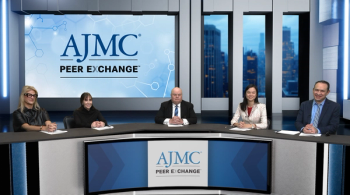
Accessing Innovation: Practical Tips and Policy Hurdles
Panelists advocate for a streamlined approach to diagnosing KMT2A-rearranged acute myeloid leukemia (AML) that includes standardized testing protocols (cytogenetics, fluorescence in situ hybridization [FISH], and next-generation sequencing) at diagnosis, close collaboration with laboratories to clarify complex reports, adoption of rapid testing methods, and flexible sample collection strategies to ensure timely, accurate identification and optimized patient care.
Episodes in this series

A streamlined approach to identifying patients with KMT2A-rearranged AML starts with implementing standardized testing protocols at the time of diagnosis. It is critical to include cytogenetics, FISH targeting specific KMT2A translocations, and next-generation sequencing panels focused on myeloid malignancies as part of routine initial workup. This ensures that all newly diagnosed patients are evaluated thoroughly and consistently, minimizing missed or delayed diagnoses. Standardized order sets that automatically bundle these tests can help reduce variability and ensure no crucial assessments are overlooked.
Close collaboration between clinical teams and diagnostic laboratories is essential to overcome common barriers such as confusing or inconsistent test reports. Engaging with pathologists and geneticists allows clinicians to clarify results and improve understanding of molecular findings. Additionally, adopting faster testing techniques—like applying FISH probes directly to samples without the usual culture period—can significantly reduce turnaround times, sometimes providing results within 12 hours instead of several days. This speed is vital because timely identification directly impacts treatment decisions and patient outcomes.
Finally, flexibility in sample collection can further expedite diagnosis. When bone marrow samples are difficult to obtain quickly, peripheral blood can be used as an effective alternative for molecular testing in this patient population. Combining these strategies with ongoing efforts to optimize communication, standardization, and laboratory turnaround times creates a cohesive system that supports rapid and accurate diagnosis. Ultimately, this approach not only enhances the ability to identify patients eligible for targeted therapies but also improves overall care coordination and clinical outcomes.
Newsletter
Stay ahead of policy, cost, and value—subscribe to AJMC for expert insights at the intersection of clinical care and health economics.








